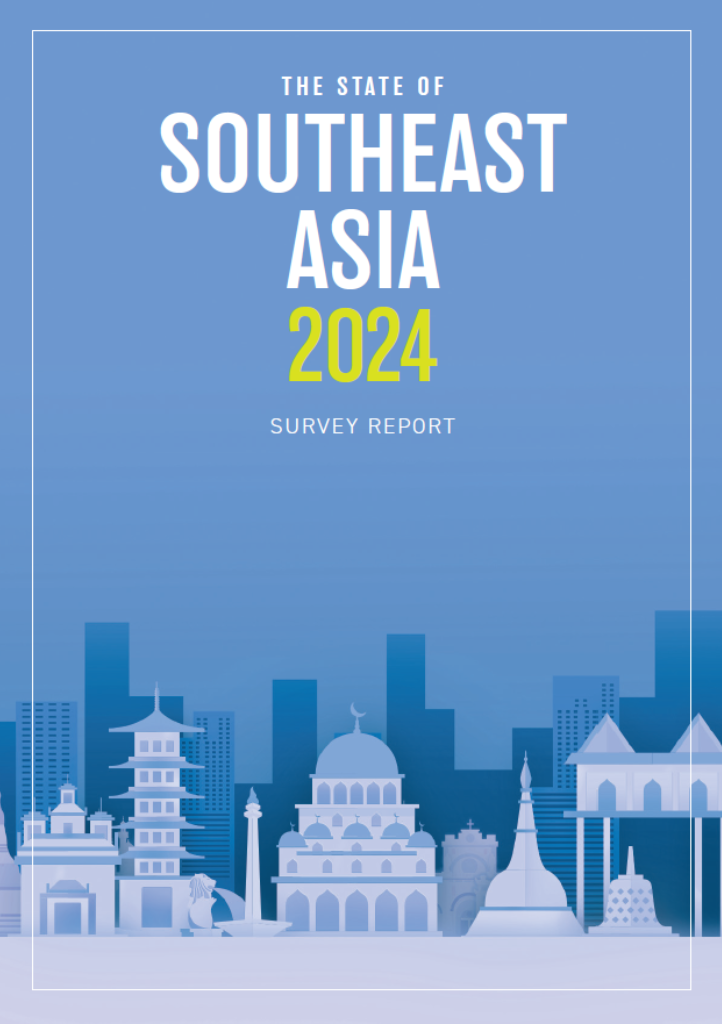Dorcas Gan investigates the opportunities and challenges arising from promoting film tourism in Southeast Asia.
Joanne Lin examines India’s dwindling strategic relevance in Southeast Asia and how it can enhance its image as a trusted partner in the region.
Damon Chee examines the rise of transnational education in Southeast Asia and how it influences the region’s educational landscape.
ASEANFocus is privileged to feature H.E. Tiffany McDonald, Australia’s new Ambassador to ASEAN. Ambassador McDonald sheds light on the ASEAN-Australia relationship after 50 years and how Australia can actively work with ASEAN to shape a shared future for the region.

The State of Southeast Asia 2024 Survey conducted by the ASEAN Studies Centre at ISEAS – Yusof Ishak Institute reveals that Southeast Asia’s top preoccupations are with unemployment, climate change, and intensifying economic tensions between major powers. The Israel-Hamas conflict is the region’s top geopolitical concern, while China has edged past the US to become the prevailing choice if the region were forced to align itself in the ongoing US-China rivalry.
ASEAN Economic Community (AEC) building is a long journey. For continued relevance and impact, the AEC must remain dynamic while taking into consideration evolving contexts and emerging opportunities and challenges.
Notable progress has been made under the two AEC Blueprints (2015 and 2025), particularly in laying down the frameworks for regional economic integration and community building. Nonetheless, gaps remain in implementation, calling for a more streamlined but result-oriented agenda and stronger institutional coordination.
Today, the AEC is faced with a markedly different context and unprecedented challenges resulting from a poly-crisis, involving geo-economic fragmentation, supply chain restructuring, and climactic changes. Without adjustment, ASEAN’s pillar and sector-centric approach can be expected to fall short in effectively responding to these challenges.
As AEC 2025 enters its final quarter, ASEAN needs to recalibrate its priorities. It also increasingly needs to take a whole-of-community approach to integration, as issues and their solutions are spread across multiple sectors. Furthermore, as it develops the AEC Post-2025 agenda, it needs to strike a balance between ambition and pragmatism, and to support substance with institutions and processes.
Elyssa Ludher and Kristina Fong examine the contributions of Artificial Intelligence (AI) to food security in ASEAN and the hurdles to its widespread adoption.
Indira Zahra Aridati and Melinda Martinus assess that while there may not be a significant change in terms of substance, Indonesia’s foreign policy will see subtle changes influenced by the incoming president’s background and beliefs, and competing domestic concerns affecting democratic consolidation.
In conjunction with the ASEAN-Australia Special Summit, Joanne Lin, Kristina Fong and Melinda Martinus explore how Australia can deepen its economic ties with ASEAN and unlock new avenues for growth.
The clean energy transition momentum is gathering pace globally, and in Southeast Asia as well. The transition is dependent on an uninterrupted supply of critical minerals and metals that are essential for the production of low-carbon technologies.
The supply of critical minerals is impeded by several constraints. First is the dominance of a handful of countries in both the upstream and downstream parts of the supply chain. Second is the current geopolitical race to secure supplies leading to greater protectionist behaviours, exhibited through export bans and trade impediments.
This study focuses on four selected critical minerals which are important to the region. Two criteria are used in determining a mineral having high significance: (1) There are significant deposits of it which can be tapped on to bolster Southeast Asia’s strategic position in the supply chains; and (2) It is an essential input in industries and sectors of importance in Southeast Asia. The four critical minerals examined in this study are: copper, nickel, bauxite (alumina), and rare earth elements (REEs).
The study makes three recommendations to enhance ASEAN’s role in the critical minerals supply chains. The first addresses the insufficiency of investments in early-stage exploration and exploitation of critical minerals and, in the process, calls for an embracing of circular economy principles. The second appeals for investments at all stages, including in technology to tap into downstream activities beyond refining and purification, and in the manufacturing of component parts such as battery cell storage and permanent magnets. The third calls for improvements in sustainability management in the mining sector, which is generally extremely environmentally and socially damaging to communities.


